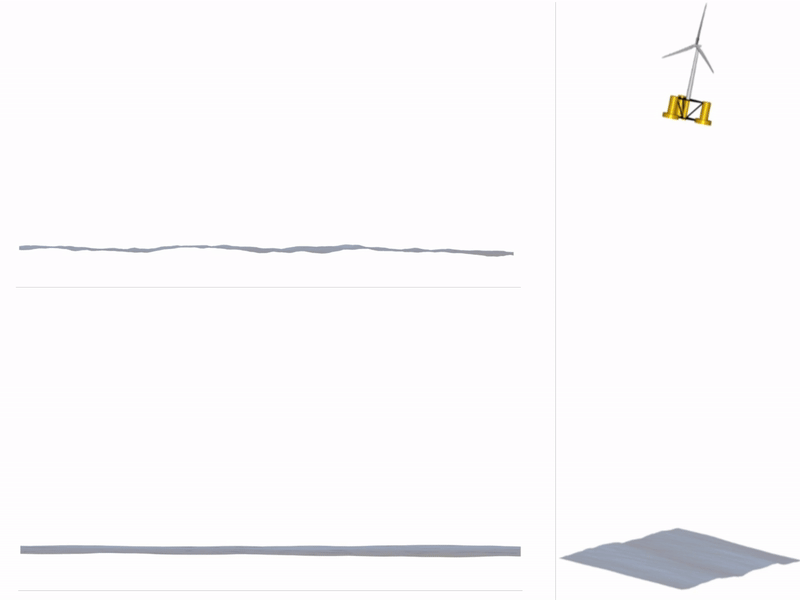Forum
Important Notice for New User Registrations
To combat an increasing number of spam and bot registrations, we now manually approve all new user registrations. While this may cause a delay until your account is approved, this step is essential to ensure the quality and security of this forum.
To help us verify your registration as legitimate, please use a clear name as user name or an official email address (such as a work, university, or similar address). If you’re concerned that we may not recognize your registration as non-spam, feel free to email us at with a request to approve your username.
Output Data(Results)
Dear David,
First of all thank you so much for such a great help and active responses to all of the members of this great community.
We have run the simulations for 2000s, we encountered a problem when we checked the results after the output, all the results have some (maybe time step ) errors. From Start to 1000s the results look normal, but then from 1000s to 2000s there seems to be problem. Please refer to the attached screenshot. We will be greatful to receive the effective solution for this problem.
Fig.1 Shows the time series, From Zero s to 2000s
Fig.2 Shows the time series, From 1000s to 2000s
Fig. 3 Shows the Data File; Normal transition of time step, that is from 999s t0 1000s
Fig. 4 Shows the Data File; abnormal transition of time step, that jumps from 1000s to 1010s
Fig. 5 Shows the Data File; same problem, that jumps from 1010s to 1020s.
Best Regards
Naeem Khan
Dear David,
First of all thank you so much for such a great help and active responses to all of the members of this great community.
We have run the simulations for 2000s, we encountered a problem when we checked the results after the output, all the results have some (maybe time step ) errors. From Start to 1000s the results look normal, but then from 1000s to 2000s there seems to be problem. Please refer to the attached screenshot. We will be greatful to receive the effective solution for this problem.
Fig.1 Shows the time series, From Zero s to 2000s
Fig.2 Shows the time series, From 1000s to 2000s
Fig. 3 Shows the Data File; Normal transition of time step, that is from 999s t0 1000s
Fig. 4 Shows the Data File; abnormal transition of time step, that jumps from 1000s to 1010s
Fig. 5 Shows the Data File; same problem, that jumps from 1010s to 1020s.
Best Regards
Naeem Khan
Uploaded files:- You need to login to have access to uploads.
Quote from David on 24. June 2024, 11:35Hello Naeem,
from the images you posted it seems like you are using a spreadsheet software to look at the timeseries.
The problem that you are facing could be that the spreadsheet tool has problems correctly identifying the decimal separator (decimal comma vs decimal point).
If you look directly at the output files generated from QBlade you should see the correct, untruncated, values.
Another potential issue is that QBlade stores simulation results as 16-bit unsigned integer values (uint16). This means that the simulation results in a stored project file (qpr) are scaled between each channel’s minimum and maximum values with a resolution of 65,535 (the maximum value of uint16). In cases where the value in a channel is sporadically very large, this can lead to coarse discretization of the time series.
BR,
David
Hello Naeem,
from the images you posted it seems like you are using a spreadsheet software to look at the timeseries.
The problem that you are facing could be that the spreadsheet tool has problems correctly identifying the decimal separator (decimal comma vs decimal point).
If you look directly at the output files generated from QBlade you should see the correct, untruncated, values.
Another potential issue is that QBlade stores simulation results as 16-bit unsigned integer values (uint16). This means that the simulation results in a stored project file (qpr) are scaled between each channel’s minimum and maximum values with a resolution of 65,535 (the maximum value of uint16). In cases where the value in a channel is sporadically very large, this can lead to coarse discretization of the time series.
BR,
David
Hello David,
Thank you so much, it worked.
The problem that we were facing was the spreadsheet tool that had problems correctly identifying the decimal separator (decimal comma vs decimal point).
BR,
Naeem
Hello David,
Thank you so much, it worked.
The problem that we were facing was the spreadsheet tool that had problems correctly identifying the decimal separator (decimal comma vs decimal point).
BR,
Naeem


